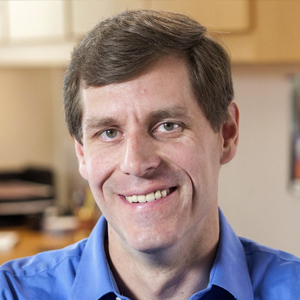Layered two-dimensional (2D) materials interact primarily via van der Waals bonding, which has created new opportunities for heterostructures that are not constrained by epitaxial growth. However, it is important to acknowledge that van der Waals interactions are not limited to interplanar interactions in 2D materials.
In principle, any passivated, dangling bond-free surface interacts with another via non-covalent forces. Consequently, layered 2D materials can be integrated with a diverse range of other materials, including those of different dimensionality, to form mixed-dimensional van der Waals heterostructures. Furthermore, chemical functionalization provides additional opportunities for tailoring the properties of 2D materials and the degree of coupling across heterointerfaces.

In order to efficiently explore the vast phase space for mixed-dimensional heterostructures, our laboratory employs solution-based additive assembly. In particular, constituent nanomaterials (e.g., carbon nanotubes, graphene, transition metal dichalcogenides, black phosphorus, boron nitride, and indium selenide) are isolated in solution, and then deposited into thin films with scalable additive manufacturing methods. By achieving high levels of nanomaterial monodispersity and printing fidelity, a variety of electronic and energy applications can be enhanced including photodetectors, optical emitters, supercapacitors, and batteries [5-8]. Furthermore, by integrating multiple nanomaterials into heterostructures, unprecedented device function can be realized including anti-ambipolar transistors, gate-tunable Gaussian heterojunction transistors, and neuromorphic memtransistors. In addition to technological implications for electronic and energy technologies, this talk will explore several fundamental issues including band alignment, doping, trap states, and charge/energy transfer across van der Waals heterointerfaces.
Mark C. Hersam is the Walter P. Murphy Professor of Materials Science and Engineering and Director of the Materials Research Center at Northwestern University. He also holds faculty appointments in the Departments of Chemistry, Applied Physics, Medicine, and Electrical Engineering. He earned a B.S. in Electrical Engineering from the University of Illinois at Urbana-Champaign (UIUC) in 1996, M.Phil. in Physics from the University of Cambridge (UK) in 1997, and Ph.D. in Electrical Engineering from UIUC in 2000.
His research interests include nanomaterials, nanomanufacturing, nanoelectronics, scanning probe microscopy, biosensors, renewable energy, neuromorphic computing, and quantum information science. Dr. Hersam has received several honors including the Presidential Early Career Award for Scientists and Engineers, TMS Robert Lansing Hardy Award, AVS Peter Mark Award, MRS Outstanding Young Investigator, U.S. Science Envoy, MacArthur Fellowship, AVS Medard W. Welch Award, and eight Teacher of the Year Awards.
Dr. Hersam has been repeatedly named a Clarivate Analytics Highly Cited Researcher with over 600 peer-reviewed publications that have been cited more than 56,000 times with an h-index of 112. An elected member of the National Academy of Inventors, Dr. Hersam has founded two companies, NanoIntegris and Volexion, which are commercial suppliers of nanoelectronic and battery materials, respectively. Dr. Hersam is a Fellow of MRS, ACS, AVS, APS, AAAS, SPIE, and IEEE, and also serves as an Executive Editor of ACS Nano.